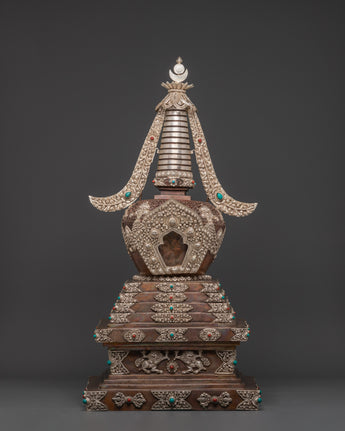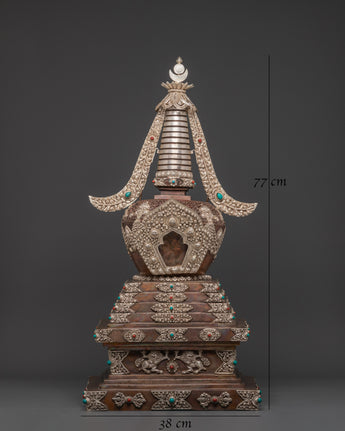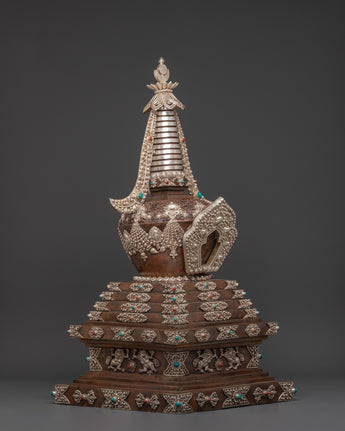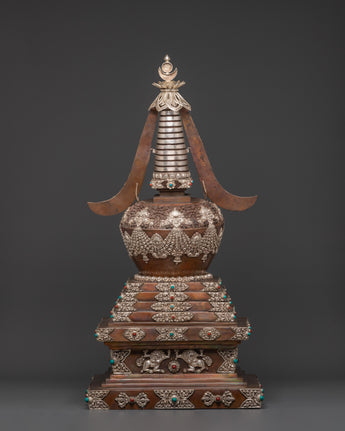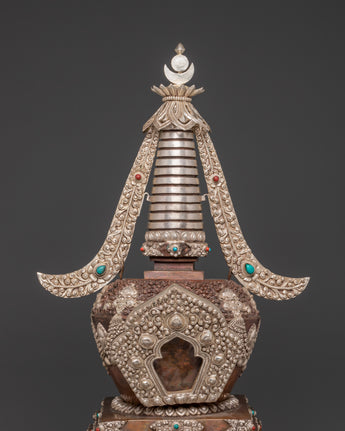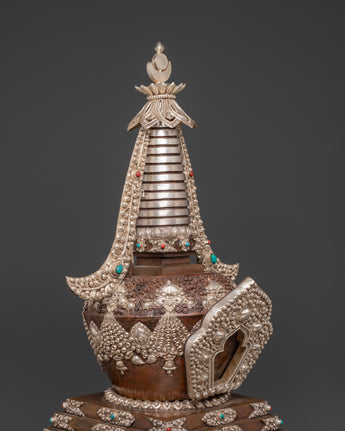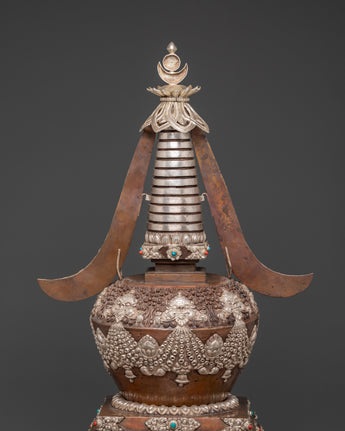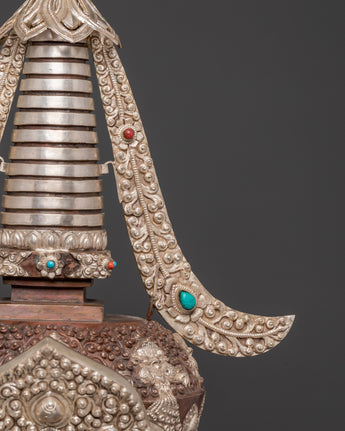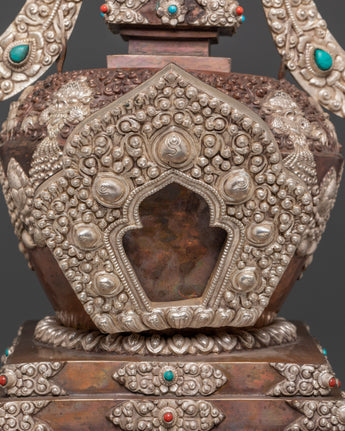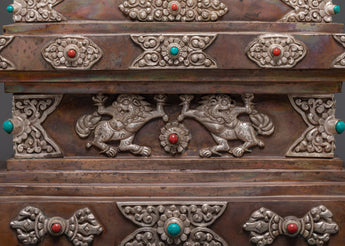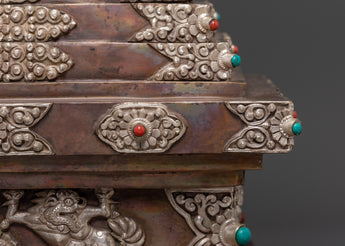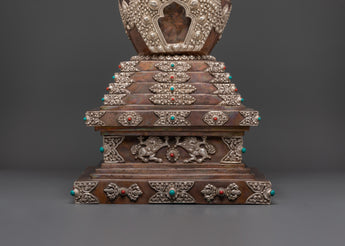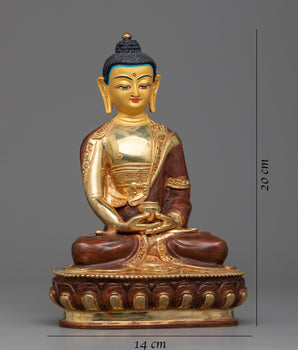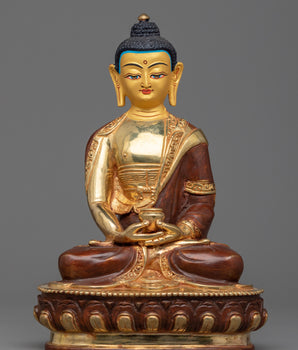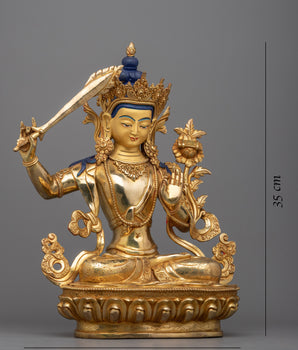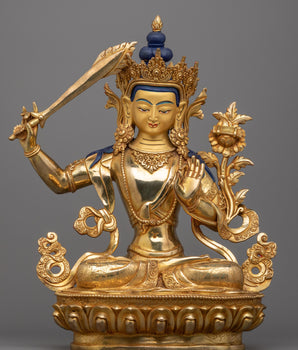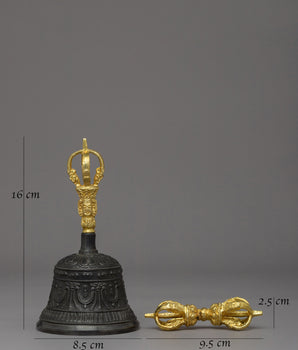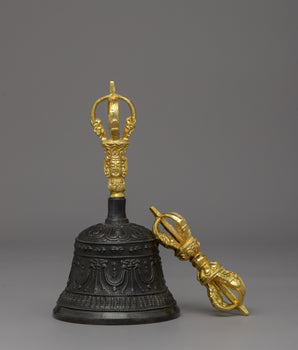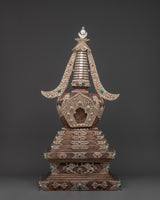
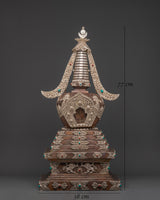
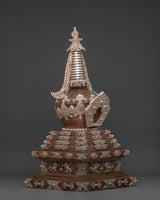
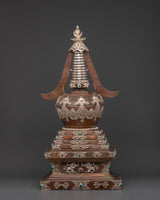
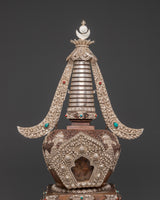
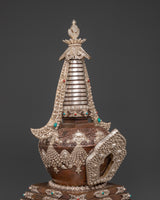
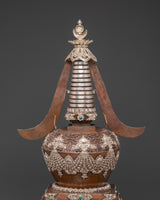
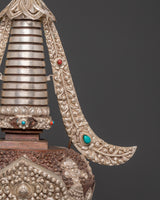
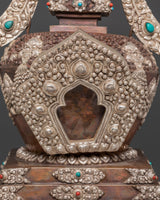
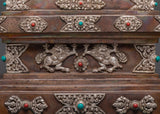
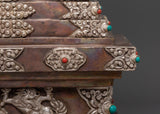
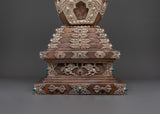
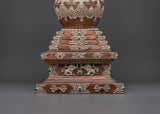
Buddhist Stupa Decor | Buddhist Home Altar Piece

100% AUTHENTIC

HANDMADE

FREE SHIPPING
Authentic Buddhist Stupa Decor | Spiritual Offering Stupa
--------------------------------------------------
Size: 77cm (Height) x 38cm (Width)
Weight: 10.02kg
Materials: Oxidized Copper, Silver Plated, Artificial Stone: Turquoise, Coral
--------------------------------------------------
About Our Ritual Item :
Bring sacred symbolism and divine energy into your home with this magnificent Buddhist Stupa Decor, a traditional emblem of enlightenment and spiritual rebirth. Standing 77cm tall and 38cm wide, this majestic stupa is a true work of art that captures the essence of Tibetan Buddhist philosophy and sacred building. Each detail is meticulously handcrafted from oxidized copper, resulting in a rich, antique texture that exudes ageless devotion. Its magnificent silver-plated embellishments sparkle in the light, symbolizing clarity, purity, and the transcending of worldly illusions. Its balanced proportions and fine details make it more than just a sacred object, but also a focal point of significant design.
The stupa is embellished with fake turquoise and coral stones, both of which are considered highly sacred in Himalayan traditions. Turquoise is thought to provide spiritual protection, health, and peace, whereas coral represents life force, courage, and grounding energy. These bright stones are skillfully inserted throughout the stupa's layered construction, adding to its aesthetic appeal while also infusing it with greater spiritual significance. With a weight of 10.02kg, the item commands attention and is stable enough to be placed permanently on a home altar, meditation chamber, temple shrine, or sacred spiritual exhibit. This stupa serves as a visual focal point for meditation, prayer, and offerings, sending blessings and compassion across the surrounding area.
Introduction To Stupa :
Before Buddhism, great teachers were buried in mounds. Some were cremated, but sometimes they were buried in a seated, meditative position. The mound of earth covered them up. Thus, the domed shape of the stupa came to represent a person seated in meditation much as the Buddha was when he achieved Enlightenment and knowledge of the Four Noble Truths. The base of the stupa represents his crossed legs as he sat in a meditative pose. The middle portion is the Buddha’s body and the top of the mound, where a pole rises from the apex surrounded by a small fence, represents his head. Before images of the human Buddha were created, reliefs often depicted practitioners demonstrating devotion to a stupa.
How to set up your own Buddhist Shrine?
• Find a clean, quiet, and uncluttered spot
• Set up an altar table, and cover it with an altar cloth that calls to you
• Place your sacred item at the center
• If you want a more elaborate altar, you can put Stupa as well.


